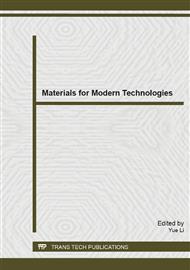p.3
p.8
p.12
p.18
p.25
p.31
p.39
p.45
p.51
Improvement in the Low-Fire Dielectric Compositions with Middle Permittivity for LTCC Applications
Abstract:
Low temperature co-fired ceramics (LTCC) technology becomes crucial in the development of various modules and substrates in electronic packaging, especially in wireless and microwave applications [. self-integrated component has laid basis on flexibility of design, wiring density and dependability for multilayer structures due to LTCC technology. Recently, with the rapid progress in wireless communications,to realize more highly integrated passive components in multilayer LTCC structure, however, it is important to control the matching behavior between component and substrate. The dielectric compositions the permittivity range of which is 20100 are most appropriate for realizing strip or microstrip resonator structures in LTCC multilayer structures due to the RF frequency range which is used in current telecommunication systems (130GHz) and the desirable chip sizes in the current technologies (210 mm)[.
Info:
Periodical:
Pages:
25-30
Citation:
Online since:
April 2014
Authors:
Keywords:
Price:
Сopyright:
© 2014 Trans Tech Publications Ltd. All Rights Reserved
Share:
Citation:


